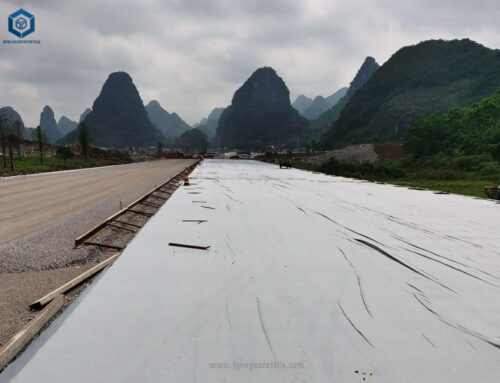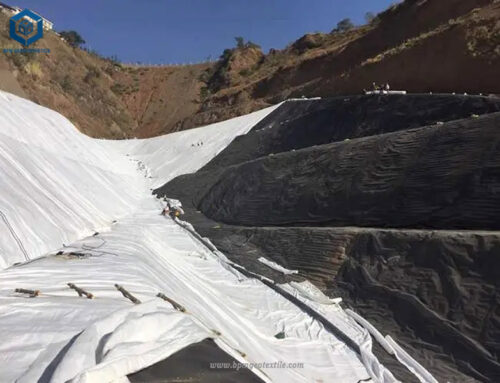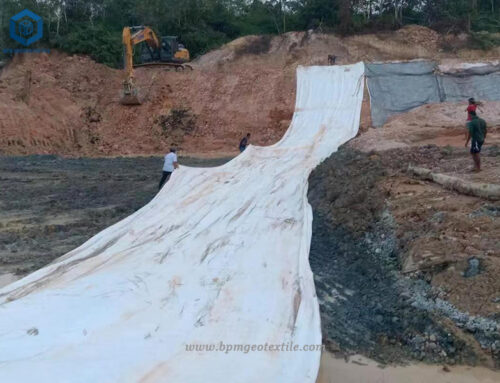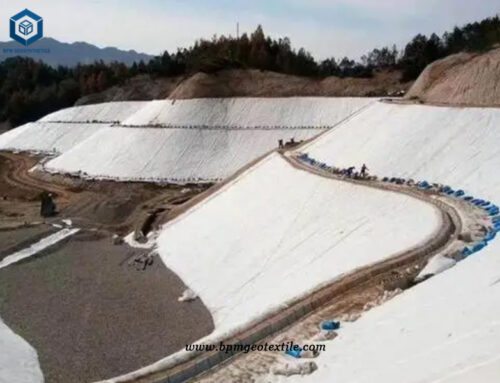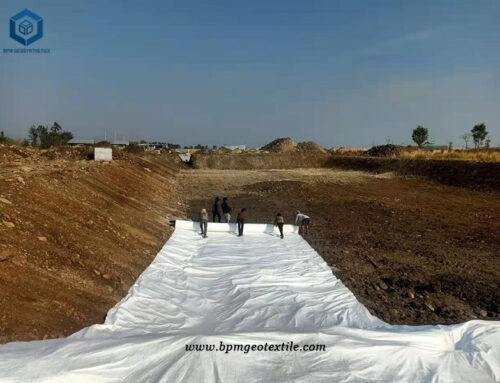Filament geotextile filter fabric has good mechanical function, good water permeability, anti-corrosion, anti-aging, and has the functions of isolation, anti-filtration, drainage, protection, stabilization, reinforcement, etc. Damage, creep is small, and the original function can still be maintained under long-term load. The characteristics of Filament geotextile filter fabric can replace traditional engineering materials and construction methods, making construction safer, contributing to environmental protection, and solving basic problems in engineering construction more economically, effectively and lastingly.
Under the density of modern traffic construction and the operation of more and more vehicles, the bearing load of highways is increased, and the complexity of weather conditions makes highways need larger and stronger anti-load capacity. Geotextile, especially filament geotextile filter fabric used on the foundation of the highway, can greatly increase the stress of the highway, so that the highway will not produce cracks, making the highway integrated. The main purpose of using geotextiles to reinforce the embankment is to improve the overall sliding safety factor of the embankment, or to use a steeper slope to reduce land occupation while ensuring safety. Simply using geotextiles to reinforce the soft foundation can improve the bearing capacity, but it is not conducive to improving settlement. The impact is not large, the settlement is generally large, and the settlement is relatively long, so for the thick soft soil layer, it is not very good to rely only on geotextile tiling, and geotextile reinforcement is mainly used for local silt layers that are not very thick. The foundation reinforcement treatment is generally combined with medium-coarse sand cushion.
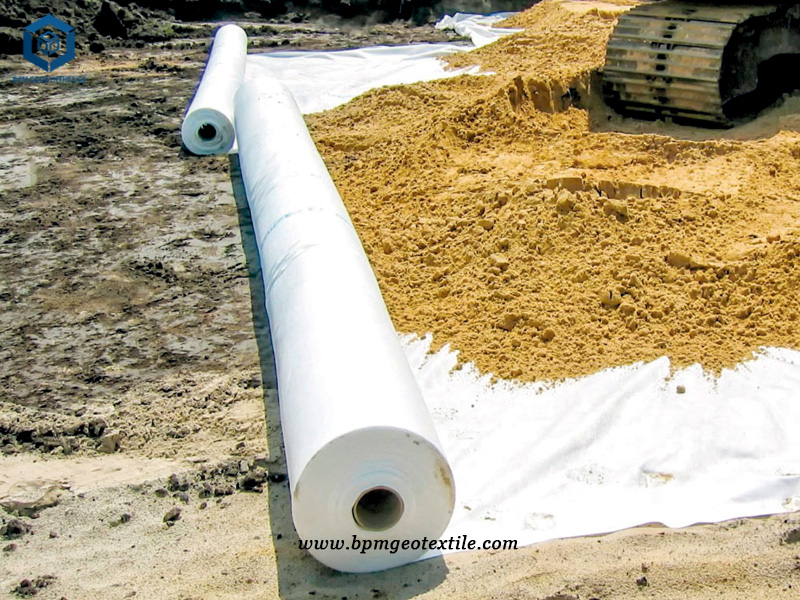
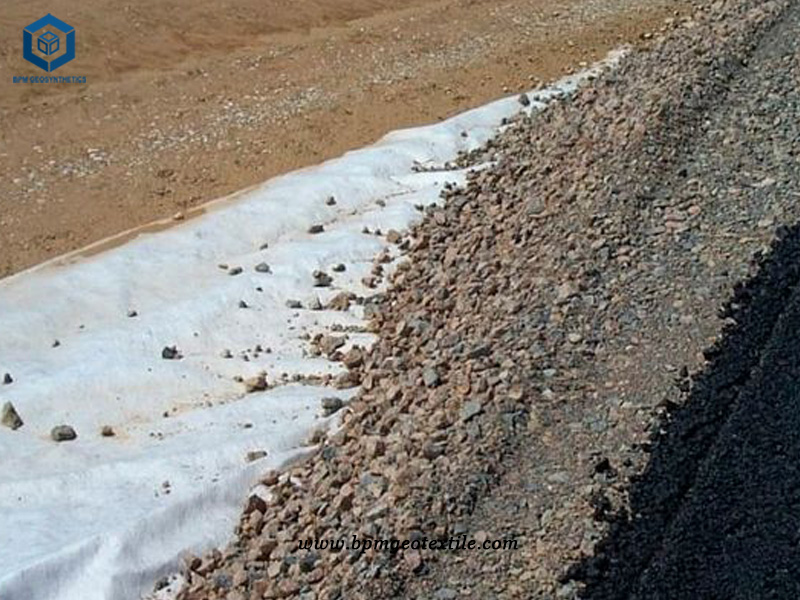
The road construction of the Thai customer needs to pass through a fish pond, and the foundation of the silt dike and weir around the fish pond will be treated. Because the treatment scale is small, it is not economical to use other treatment methods for the foundation of the dike. On the one hand, the reinforcement of the filament geotextile filter fabric on the sand pad spreads the load of the embankment to both sides, and then reduces the stress at the center of the roadbed. The main principle of geotextiles to reduce settlement is that on the one hand, because of the reduction of the effective load in the center of the embankment, it can also reduce the lateral displacement and lateral extrusion. The filament geotextile filter fabric and the bottom sand layer serve as a horizontal drainage channel, which accelerates the drainage and consolidation of soft soil. The Thai customer ordered 52,000 square meters of PET non-woven geotextile, which can not only solve the problem of road foundation settlement, but also reduce the burden on the customer’s construction, speed up the progress of road construction, and reduce construction costs.
After the embankment is completed, the concrete pavement is laid on the top of the embankment, and no cracks will appear in the road foundation by laying the geotextiles. Mixed piles of gravel piles or composite foundations of prefabricated piles) are combined to form a composite foundation of reinforced pile groups, which can then make the embankment load uniform. It acts on the top of the pile and the soil between the piles, and further exerts the combined effect of the pile and the soil to improve the bearing capacity of the foundation and reduce settlement.
Specification Of Filament Geotextile Filter Fabric for Road Construction in Thailand
- Roll of Size – 5.8m*100m
- Geotextile: – PET Nonwoven Geotextile 400g
- Total Quantity – 52000 square meters
The main role of reinforced filment geotextiles in the foundation treatment of reclamation projects
1. Play the role of isolation and reduce the settlement of the embankment body. The foundations of highway engineering in Thailand are all high-plastic clay. Without the isolation of geotextiles, the silty soil on the surface of the foundation will “slip” upward through the stone voids, causing the embankment to sink. Since the foundation of the fish pond is a permeable body, with the ebb and flow of the tide, part of the soft soil rising above will be washed away by the tide, which will further lead to the “slurry” of the foundation soil and the settlement of the embankment body. After laying the reinforced geotextile, it will effectively prevent the “slurry” of the plastic foundation soil and reduce the settlement of the embankment body.
2. Strengthen the integrity of the foundation and improve the bearing capacity of the foundation. One is to enhance the confinement effect of the foundation soil. The surface layer of the fish pond tidal flat foundation is all fluid-plastic soft silt. After the geotextile is laid, the lateral movement of the stone foundation will be effectively limited, thereby improving the bearing capacity of the foundation. The second is to homogenize the foundation stress. After the geotextile is laid, the additional stress of the foundation will be redistributed, the foundation stress will be homogenized, the load of the embankment body will be expanded to a larger range, and the maximum additional stress of the foundation will be reduced, thereby effectively improving the bearing capacity of the foundation and reducing the uneven lateral settlement of the embankment body.
3. Strengthen the overall anti-skid stability of the embankment body. The overall anti-slip stability of the embankment body is the controlling factor in the design of the fishpond highway engineering, which is directly related to the size of the highway section and the engineering investment. After the geotextile is laid, the anti-sliding force will be effectively improved, the overall anti-sliding stability of the embankment body will be improved, the section of the seawall will be effectively reduced, and the project cost will be reduced.
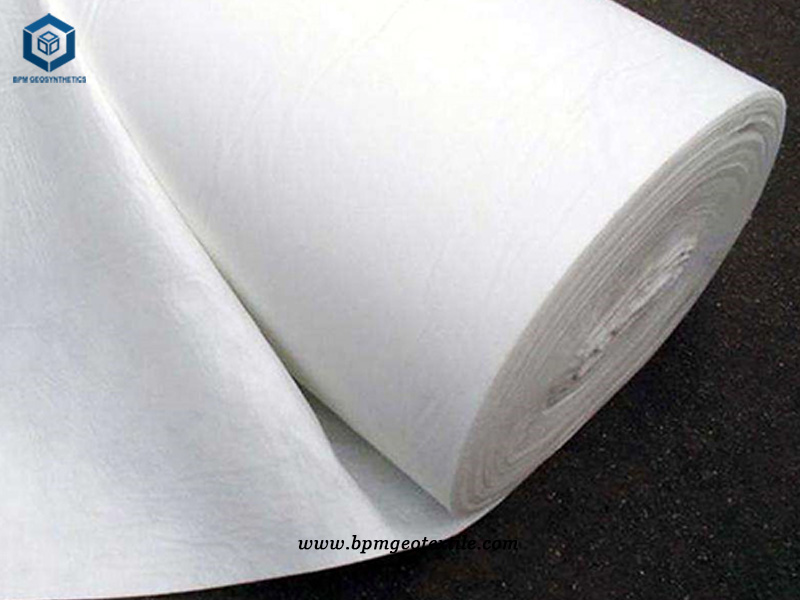
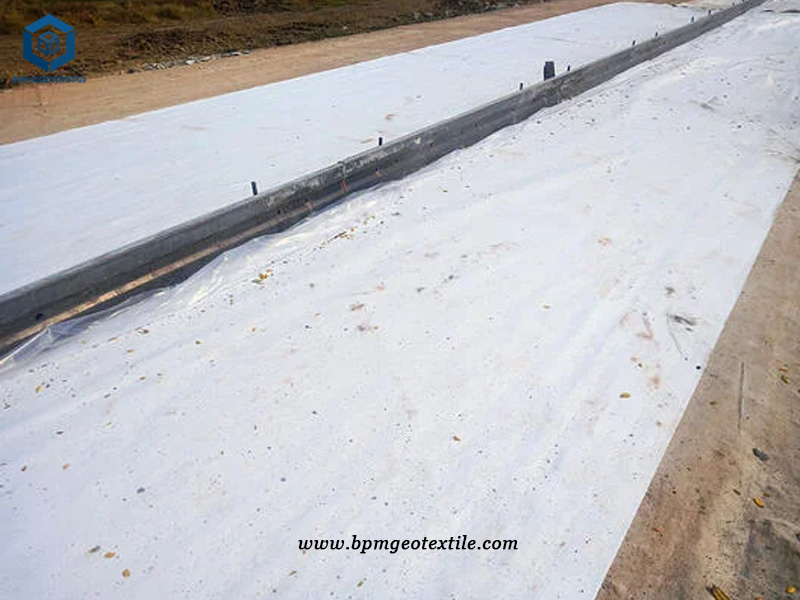
Laying process of polyester filament geotextile filter fabric
1. Storage, transportation and handling of geotextiles
Geotextile rolls should be protected from damage before installation and deployment. Geotextile rolls should be stacked in a place where there is no water accumulation, and the height of the pile should not exceed the height of four rolls, and the identification sheet of the roll can be seen. Geotextile rolls must be covered with opaque material to prevent UV aging. During storage, keep labels intact and data intact. Geotextile rolls must be protected from damage during transport (including on-site transport from material storage to work). Physically damaged geotextile rolls must be repaired. Severely worn geotextiles cannot be used. Any geotextiles that come into contact with leaked chemical reagents are not allowed to be used in this project.
2. The laying method of geotextile filter fabric
1) It is rolled by hand; the cloth surface should be flat, and the deformation allowance should be properly reserved.
2) The installation of filament or short filament geotextiles usually uses several methods of lap jointing, sewing and welding. The width of stitching and welding is generally more than 0.1m, and the width of lap joint is generally more than 0.2M. Geotextiles that may be exposed for a long time should be welded or sewn.
3) Sewing of geotextiles, all stitching must be carried out continuously (for example, point stitching is not allowed). Geotextiles must overlap at least 150mm before overlapping. The minimum stitching distance is at least 25mm from the selvedge (the exposed edge of the material). The sewn geotextile seam most includes 1 row and lock chain seam method. The thread used for stitching should be a resin material with a minimum tension exceeding 60N, and have chemical resistance and UV resistance equivalent to or exceeding that of geotextiles. Any “missing stitches” in the sewn geotextile must be resewn in the affected area. Appropriate measures must be taken to prevent soil, particulate matter or foreign matter from entering the geotextile layer after installation. The lap joint of cloth can be divided into natural lap joint, seam joint or welding according to the terrain and use function.
About BPM
BPM manufactures and wholesales many types of effective and states of the art geotextile, geomembrane, and other geosynthetics to over 36 countries. BPM geosynthetic products are widely used across a variety of industries including waste containment, water containment, aquaculture, industrial project, energy project and mining projects, etc. BPM main customers are from Australia, France, Sweden, UK, Hungary, New Zealand, Poland, Mexico, Ecuador, Brazil, Pakistan, Bangladesh, Thailand, Vietnam, Malaysia, Indonesia, Singapore, Philippines, Sri Lanka, India, UAE, Saudi Arabia, Qatar, Kenya, etc.
BPM is not only manufacturing best quality geosynthetic products but also providing professional design and installation service. OEM, ODM, custom development and fabrication are also available. If you have any questions or inquiries, please fill and submit the following form, we will reply as soon as possible.

